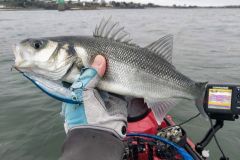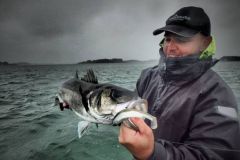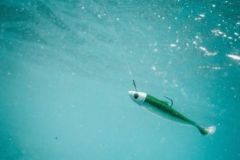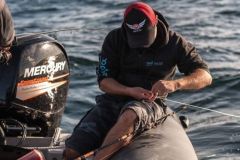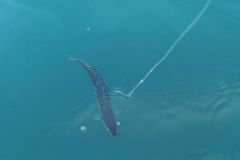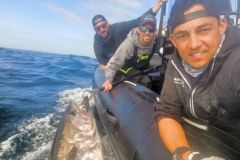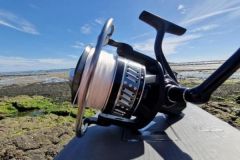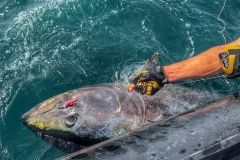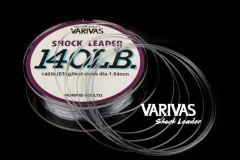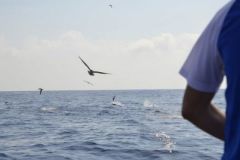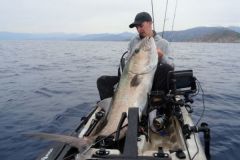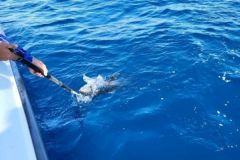There are two completely different ways of tracking bluefin tuna. The first approach, with lures, consists of sailing to find surface hunts and fishing the areas of activity. As this is not always the case, a second strategy is to fish a fairly wide area where the tuna are supposed to be holding or passing through, and to bring them to us with a bait: the broumé.
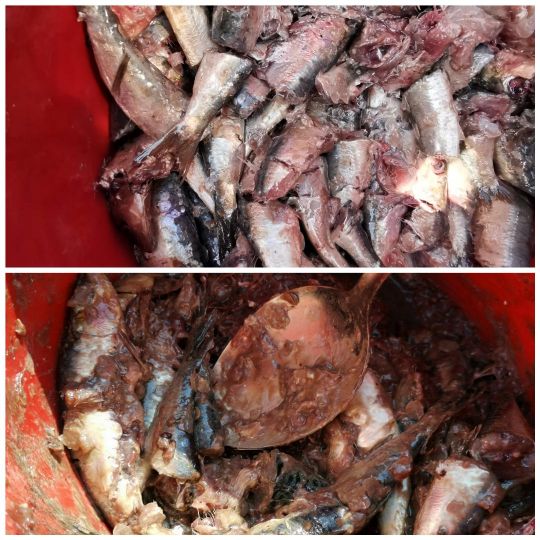
Passage areas
When you're graze fishing, you can't afford to drift anywhere with a livebait in the hope of a random catch. That's why you need to define an area where you can come across the fish you're after.
It is then possible to fish :
- An area where bluefin tuna are known to be present (either because of the occasional hunt or because you have this information through your network).
- Areas where there is a high concentration of forage fish (sardines, mackerel, etc.) and obvious signs of activity (birds, fish hunting, dolphins, etc.).
- Supposed transit zones, such as certain probe lines in my area.
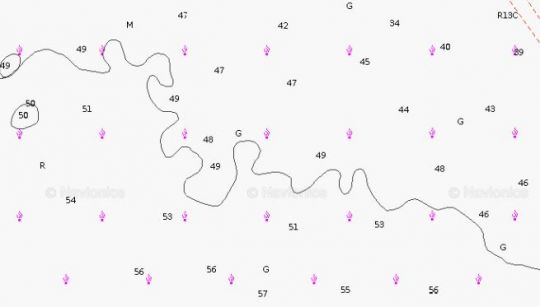
The broumé
Once drifting with a few livebaits, the main idea is to guide the tuna to our baits. That's where the broumé comes in!
The principle of broumé is to throw into the water regularly (every 2-3 minutes) a mixture of oily fish, oil, sand and pieces of fish (sardines, mackerel or horse mackerel) to create an olfactory trace but also a living zone by reconstituting a food chain. Its role is to whet the tuna's appetite and keep them within the drift of your lines. It's even very common to see blue sharks circling the boat in this configuration!
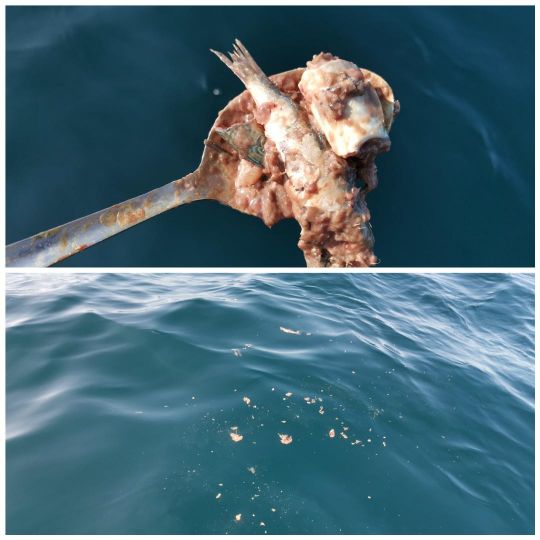
Rusty
Strouille is a mixture of sardine oil, sand and crushed fatty fish (sardines, anchovies, etc.), to which blood, bread and other ingredients can be added. It can be ladled or placed in a perforated bag (e.g. potato sack) suspended under the boat. It releases micro-particles of scent and creates a greasy trail in which to drift your lines. If you can make your own, you can also buy it ready-made and frozen...
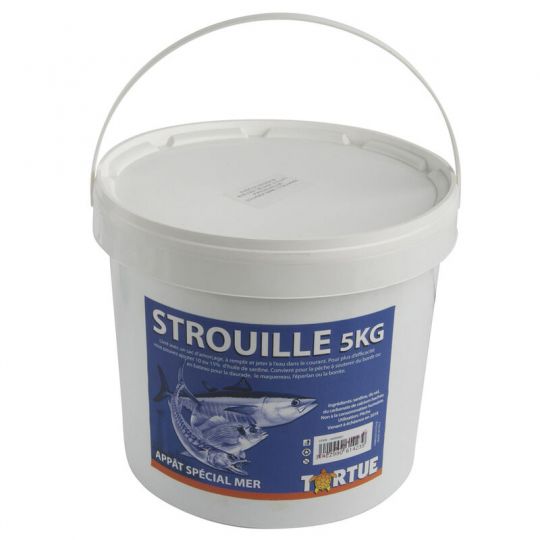
Line placement
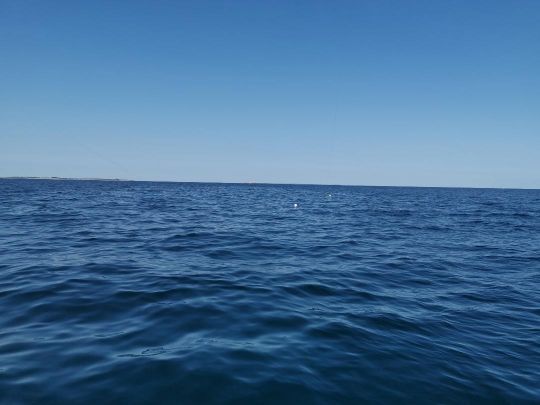
When fishing with scrambles, it's advisable to place several successive lines at a distance from each other, each with a livebait moving at a different depth so that each of them moves at the same level as your scramble. As the fish sink slowly, the deepest line should be the furthest from your boat. For example, depending on the speed of the drift, a line fishing in 20 m of water may be placed 40-50 m behind the boat.





